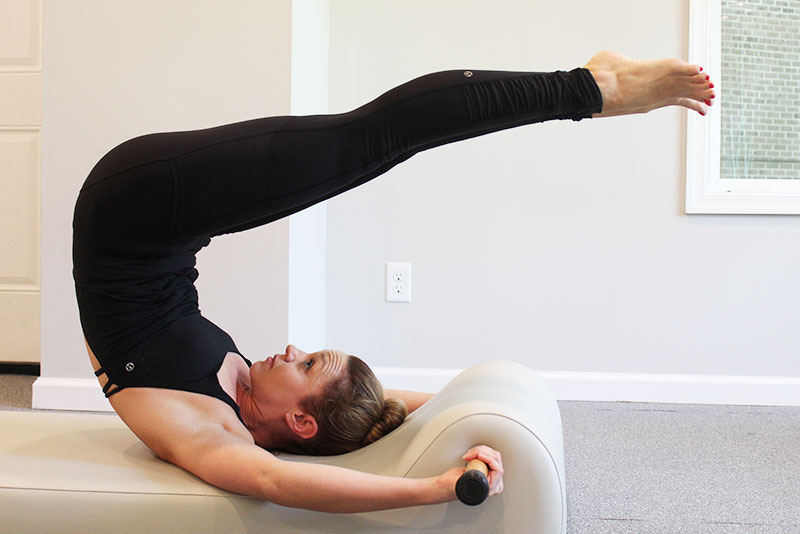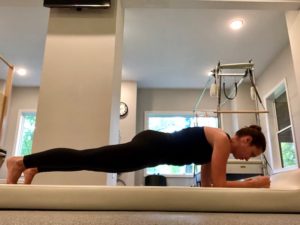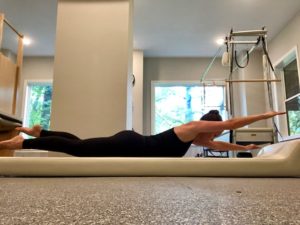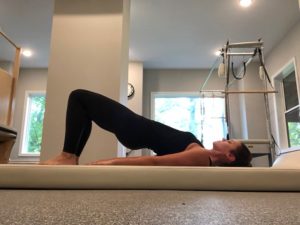Is Pilates the Secret to Easing Back Pain?

Back pain is among the most common physical ailments people experience. Americans spend over 50 billion dollars a year seeking solutions, according to the American Chiropractic Association. Common remedies include over-the-counter pills, prescription medications and surgical intervention. Increasingly, more people are turning to Pilates exercises for back pain relief.
The Benefits of Pilates
In many cases, there are no medical causes for lower and upper back trouble. The problem is due to our daily lifestyle habits. These include sitting for long periods of time and being hunched over our computers. Often, you can prevent, reduce or eliminate this discomfort by incorporating the right exercises into your daily routine.
Does Pilates help your back?
One of the best things about this workout method is that it works with your body’s natural ability to heal itself. There are a series of postures you can perform that target specific body areas, such as a weak core.
A weak core can be strengthened over time. In the process, your spine develops the support it needs. Gradually, your posture improves and the stress on your back is reduced. A strong core is a key to a healthy back. Here are a few other benefits of Pilates:
- Keeps body balanced
- Supports the spine
- Straightens postural muscles
- Improves awareness of movement habits
- Preserves neutral alignment
A Pilates class is ideal for anyone suffering from mild to severe back pain. In fact, individuals who have degenerative disc disease or degenerative joint disease can benefit the most. By practicing the exercises, patients can experience improvement in posture asymmetries, which reduces the wear and tear on intervertebral disc and joints. Also, individuals engaged in excessive movements, such as dancers and athletes, can gain long-lasting results.
A Word of Caution
Pilates movements range from simple to challenging. It’s best that you work with a highly trained, certified Pilates instructor. Although you can do the exercise on your own, keep in mind that performing the postures incorrectly may worsen your back condition. Working one-on-one with a trainer helps you learn the proper techniques and achieve faster results.
Exercises That Improve Back Health
The list below includes example Pilates movements that help prevent and relieve backaches. Make sure you wear comfortable clothes and use a cushioned floor mat.
Forearm Plank
 If you have a busy schedule and can only do one pose, this a solid go-to choice. The forearm plank is the ultimate core position. It works every area of your midsection, including the back, deep core muscles, shoulders, arms, buttocks, legs, hips and waist.
If you have a busy schedule and can only do one pose, this a solid go-to choice. The forearm plank is the ultimate core position. It works every area of your midsection, including the back, deep core muscles, shoulders, arms, buttocks, legs, hips and waist.
- Lie face down on your mat and position your elbow right under your shoulders. Tuck your toes under and give a firm push along the backs of your heels and legs.
- Tighten your core and use your lower abs as you raise your body off the floor. Keep your body in a straight line from your ear to your toes.
- Hold the position for 30 to 60 seconds, and then lower yourself to the mat. Repeat this motion two or three more times.
Swimming

This activity is ideal for strengthening your back muscles. It requires that you use your abs while keeping your spine long throughout the movement.
- Lie flat on your stomach. Keep your legs together in a straight line. Make sure your shoulder blades are pulled back away from your ears. Now stretch your arms in front of you while pulling your abs in.
- Stretch and raise your legs and arms off the floor. Lengthen your spine so your head is aligned with it. Look down at the mat as you do this movement. It protects your lower back and keeps you from crunching your neck.
- Alternate between lifting your right leg and left arm then left leg and right arm. Pump your limbs up and down in fast, small pulses. Focus on the length of your limbs, not height. Do this for 30 to 60 seconds and repeat two or three more times.
Pelvic Bridge

This exercise is not only good for your low back but also your abs, hamstrings, glutes and quads. You begin by lying on your back, knees bent and feet situated roughly a hand’s distance from your backside. Make sure your palms rest flat on the floor and do the following:
- Feet hip-width apart, press your feet down while engaging your seat. Slowly lift your tailbone off the floor until your hips, knees, and shoulders are in alignment.
- Relax your upper torso and hold the pose for 10 seconds.
- Gently roll down one vertebra at a time until your body is back to its original position. Do up to three sets of 10 to 12 repetitions.
Pilates exercises for back pain provide core-strengthening support to improve your posture and spine alignment while reducing muscle tensions. With patience, commitment and the guidance of a certified Pilates instructor, you can enjoy a pain-free lifestyle.

Recent Comments